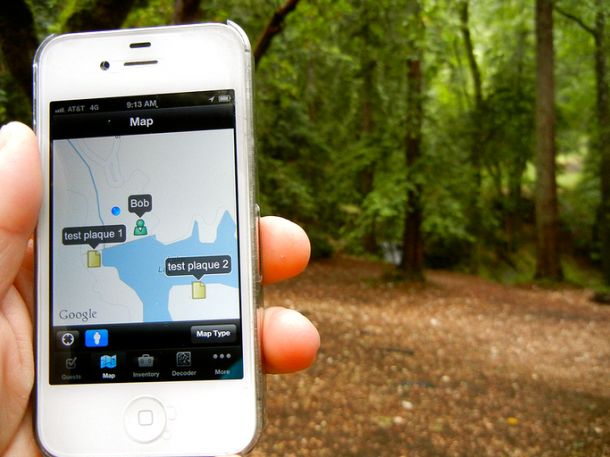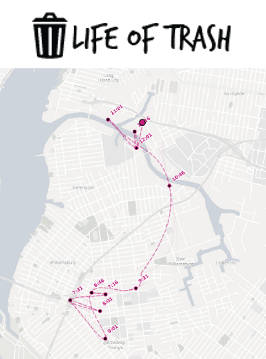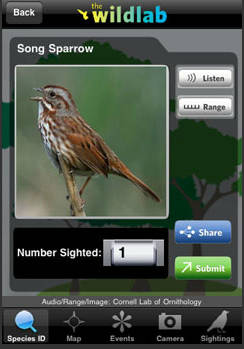
There’s a new trend in New York that has the city’s citizens volunteering their time and skills to the cause of science. If you have a smartphone and some time, you too can get involved in this cool new way trend of crowd-sourced science.Citizen Science is the development of science projects where professional scientists recruit the help of the public for participation in research. Whether intellectually or because they have a new set of skills and experience, the public tends to have a fresh outlook and can contribute to science differently than professionals. Projects are typically connected with nature and many include the use of mobile devices to interact with nature in a new way.As New York looks for more ways to gather data, the development of new projects such as these can contribute greatly to making the city smarter. Similar to the Hudson Yards project’s “quantified community” which will gather data on waste movement, traffic patterns, and living patterns, citizen science projects throughout the city gather data on nature, climate change, and water quality.
Who Can be Involved?
Everyone. Anyone who wants to participate and volunteer to help a professional scientist with his or her work can be a citizen scientist. Many participants find it to be a rewarding learning experience and often sign up for additional projects. Scientists have been using citizens to aid in scientific research for decades, but as technology is becoming more integrated into every inch of our lives and the Internet of Things is growing, citizen scientists are going to be seen and utilized more and more in the future.
What Projects are Forming in NYC?
Citizen science projects are using technology to engage with the city’s water, waste, wildlife, and plants, giving scientists a better understanding of things such as the effects of climate change on the city, or of how citizens deal with waste. Here is a brief sampling of a few cool projects making our city more informed. Life of TrashOur methods of disposing trash are carried out neatly from the comfort of our homes. We are not forced to think about what we consume or our impact on the planet. But thanks to a cell phone tracking experiment by NYU student Nicholas Jackson, citizens now have the ability to track their trash and gain a better understanding of where it all goes. Life of Trash opens questions about how we can improve the system to reflect a smarter, more sustainable New York. By collecting data on where trash originates and where it goes, it is possible to track the connection between waste, landfills, and economics. As the project grows, the team at Life of Trash hopes to create more ways for citizens to help in the movement and reduction of our trash.Citizen Water Quality Testing ProgramIn partnership with the River Project, NYC wants to further understand the health of water. To help, citizen scientists spent twenty weeks over summer 2014 collecting weekly water samples from docks. Samples were collected across the City, ranging from Yonkers to Jamaica, and sent for pollution testing. The project hopes to create a baseline of data that, combined with rainfall, wind and tide information, can help inform boaters of potential water quality. Participants can look at an interactive map online to see what areas have been tested so far and which areas need more attention for future projects. The results of this summer’s testing were published October 3 and are now available for viewing on the website. Each year, the organization uses water collection to focus on different areas of research. Follow the site to see what project is in store for next year and how to get involved.
Life of TrashOur methods of disposing trash are carried out neatly from the comfort of our homes. We are not forced to think about what we consume or our impact on the planet. But thanks to a cell phone tracking experiment by NYU student Nicholas Jackson, citizens now have the ability to track their trash and gain a better understanding of where it all goes. Life of Trash opens questions about how we can improve the system to reflect a smarter, more sustainable New York. By collecting data on where trash originates and where it goes, it is possible to track the connection between waste, landfills, and economics. As the project grows, the team at Life of Trash hopes to create more ways for citizens to help in the movement and reduction of our trash.Citizen Water Quality Testing ProgramIn partnership with the River Project, NYC wants to further understand the health of water. To help, citizen scientists spent twenty weeks over summer 2014 collecting weekly water samples from docks. Samples were collected across the City, ranging from Yonkers to Jamaica, and sent for pollution testing. The project hopes to create a baseline of data that, combined with rainfall, wind and tide information, can help inform boaters of potential water quality. Participants can look at an interactive map online to see what areas have been tested so far and which areas need more attention for future projects. The results of this summer’s testing were published October 3 and are now available for viewing on the website. Each year, the organization uses water collection to focus on different areas of research. Follow the site to see what project is in store for next year and how to get involved. The Wild LabThe Cornell Lab of Ornithology is gathering valuable information on tracking bird species in New York City using citizen scientists and a smartphone app. The app works both ways, helping citizens learn to identify wildlife through process of elimination, while helping scientists gather information from a wider range of locations than they would previously have been able to. As the climate changes, what birds are remaining and what species are moving on?BudBurst and BudBurst BuddiesThe environment is changing as fast as technology, so the New York City Hall of Science (NYSCI) in Queens developed an app to continue the climate change dialogue beyond a one-day museum visit. Budburst Buddies is a hand-on website that targets young people. Through the interactive material, children engage in understanding climate change and develop a community-style education. Unsurprisingly, Yale University found through a survey that though many people trust science centers for climate change information, the main information they trust is through the words of friends and family. BudBurst Buddies stems from a greater project, BudBurst, that allows adults to help track plant species. The data collected from citizens help scientists to track the responsiveness of plant species to climate changes from the local to national level.Leaf SnapEver wander in nature and wonder what trees you’re seeing? Leaf snap is a mobile citizen science project to help answer this question. Taking advantage of newly developed recognition software, the app allows citizens scientists to snap a photo of plants. With each uploaded photo, the picture, species information and geo-location is all sent to the Leaf Snap database for scientists to study species distribution. The app is a win-win, helping citizens learn about their surrounding vegetation while the data collection helps scientists study the whereabouts of plants and how these species are faring as our climate changes. As urban farms become more popular, farmers can evaluate what plant life occurs naturally in the region and help New York better interact with plant life in the city. Research and development is being conducted by Columbia University in partnership with the University of Maryland and the Smithsonian Institute.Like NYC, science never sleeps, and new citizen science projects are constantly being developed. A few past projects that NYC has conducted have been the Great Pollinator Project where citizens helped monitor the life and activity of bees—the world’s most necessary pollinator—or using citizen science to quantify community garden crop yields. Now, as NYC becomes one of the rising stars in tech, more citizen science projects are engaging nature with the use of apps. For more information on current projects, visit Scistarter, a startup dedicated to connecting citizens and scientists for “science we can do together.”
The Wild LabThe Cornell Lab of Ornithology is gathering valuable information on tracking bird species in New York City using citizen scientists and a smartphone app. The app works both ways, helping citizens learn to identify wildlife through process of elimination, while helping scientists gather information from a wider range of locations than they would previously have been able to. As the climate changes, what birds are remaining and what species are moving on?BudBurst and BudBurst BuddiesThe environment is changing as fast as technology, so the New York City Hall of Science (NYSCI) in Queens developed an app to continue the climate change dialogue beyond a one-day museum visit. Budburst Buddies is a hand-on website that targets young people. Through the interactive material, children engage in understanding climate change and develop a community-style education. Unsurprisingly, Yale University found through a survey that though many people trust science centers for climate change information, the main information they trust is through the words of friends and family. BudBurst Buddies stems from a greater project, BudBurst, that allows adults to help track plant species. The data collected from citizens help scientists to track the responsiveness of plant species to climate changes from the local to national level.Leaf SnapEver wander in nature and wonder what trees you’re seeing? Leaf snap is a mobile citizen science project to help answer this question. Taking advantage of newly developed recognition software, the app allows citizens scientists to snap a photo of plants. With each uploaded photo, the picture, species information and geo-location is all sent to the Leaf Snap database for scientists to study species distribution. The app is a win-win, helping citizens learn about their surrounding vegetation while the data collection helps scientists study the whereabouts of plants and how these species are faring as our climate changes. As urban farms become more popular, farmers can evaluate what plant life occurs naturally in the region and help New York better interact with plant life in the city. Research and development is being conducted by Columbia University in partnership with the University of Maryland and the Smithsonian Institute.Like NYC, science never sleeps, and new citizen science projects are constantly being developed. A few past projects that NYC has conducted have been the Great Pollinator Project where citizens helped monitor the life and activity of bees—the world’s most necessary pollinator—or using citizen science to quantify community garden crop yields. Now, as NYC becomes one of the rising stars in tech, more citizen science projects are engaging nature with the use of apps. For more information on current projects, visit Scistarter, a startup dedicated to connecting citizens and scientists for “science we can do together.”

